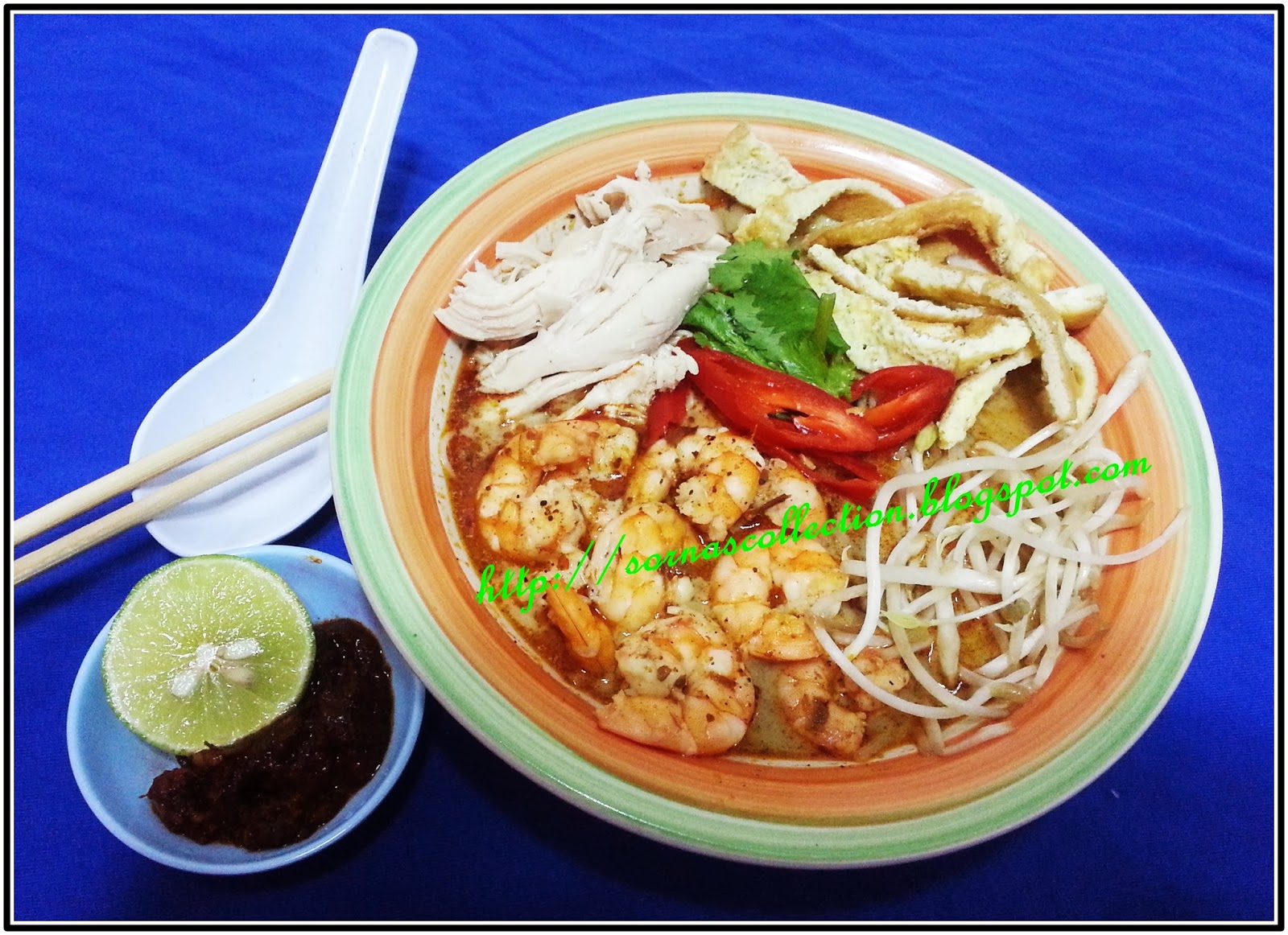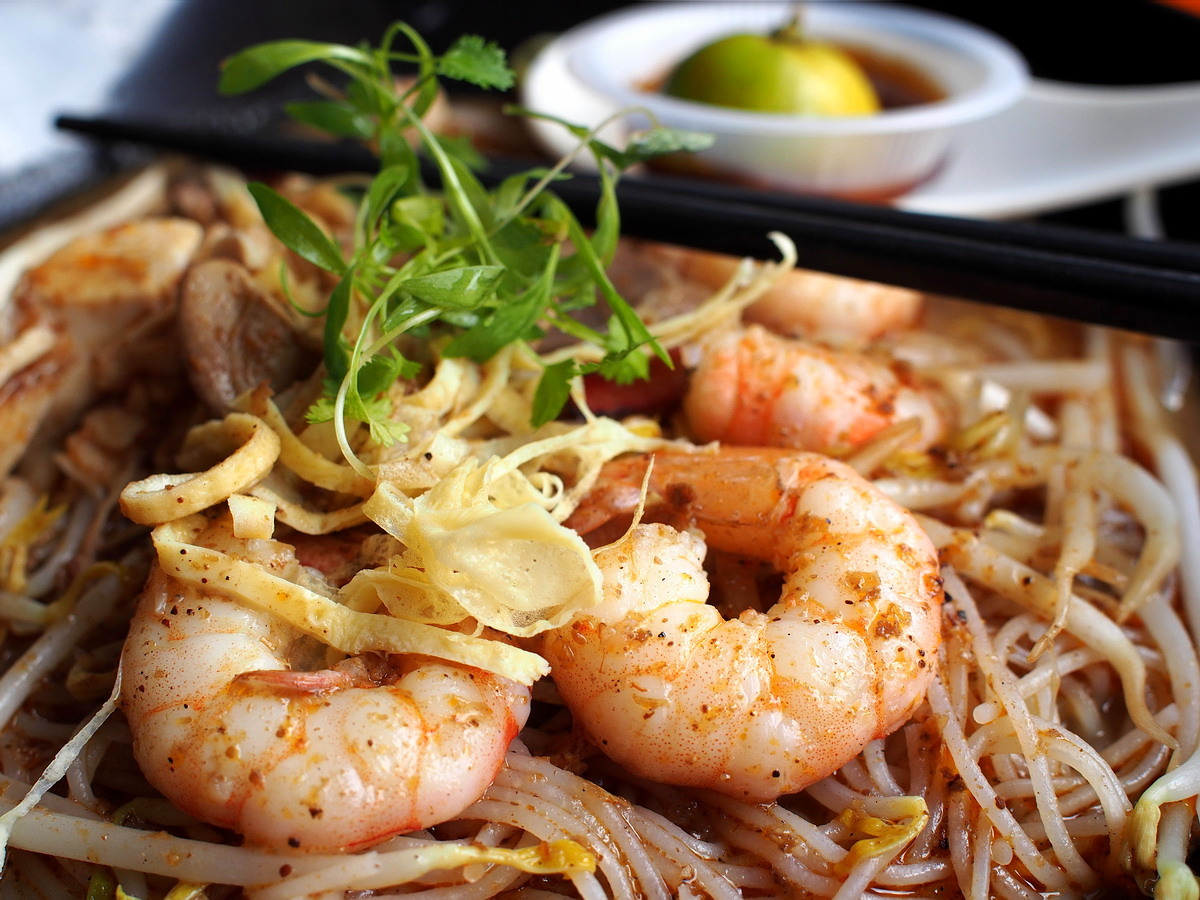


Add the coconut milk and bring to the boil. Bring the stock back to the boil and blanch the prawns in the stock for about 20 seconds, or until cooked. Strain the stock through a sieve from Step 2 to remove the prawn shells/ laksa paste residue / ikan bilis. Blanch the beansprouts for about 30 seconds. Over medium heat, blanch the rice vermicelli for about 2 minutes,or until cooked, to manufacturer's instruction. Bring a pot of water to boil in a separate pot. Once cool, cut into thin long strips using a sharp knife.Ĥ.

Cook each side for about 2 minutes, until golden brown. In a separate pan, heat the oil and add the egg. Beat egg and season with a dash of light soy sauce. Turn on the heat and add the laksa paste and prawn shells/head (or dried anchovies). Once cool, shred the chicken using 2 forks.Ģ. After 8 minutes, turn off the heat and leave the chicken to steep for another 8 minutes. Once boiling, place chicken in and lower to a simmer and simmer for about 8 minutes. Place chicken stock in a saucepan, then bring to the boil. Even the very last bowl, served by bored caterers under hospital-style lighting in Kuching’s little airport, went down a treat.8-10 king prawns, shelled and deveined with tails intact (reserve shells for stock) or 15g anchoviesġ/2 grated coconut, squeezed to yield approx. Two prawns laid head-to-tail, like the Taoist yin-yang symbol. Some bean sprouts here, a few leafy greens there. Just enough rice noodles, just enough shredded chicken, and just enough of the omelet strips. But if they did break away, they agree at least that laksa would be their national dish.īetween our first morning in Kuching and the day we flew out, we sampled laksa whenever we were in the mood, which is to say almost every day.Įvery serving seemed authentically sour yet creamy, and each bowl was deeply satisfying.
LAKSA SARAWAK FULL
Still, few Sarawakians want full independence. But after a few days of reading the English-language Borneo Post (in which many articles referenced “MA63,” the London agreement of 1963 that supposedly guaranteed Sarawak and Sabah considerable autonomy within Malaysia), and asking questions so lopsided I was sure to get a response (“What would Sarawak do without all those subsidies from KL?”), the resentment was clear. I knew nothing about any of this before arriving. A former chief minister has said the relationship should be rebalanced, so the 2.6 million people in Sarawak can feel like partners in the national project, rather than servants of “West Malaysian colonialists.” A common complaint is that the tax dollars spent in Sarawak are tightly controlled by the authorities in “KL” (Kuala Lumpur, the capital of Malaysia), and that the Sarawakians themselves aren’t always consulted. But it seems many in Sarawak are unhappy with their place in the Malaysian federation. Inevitably, it was a huge hit among Sarawakians living far from their home state. Tan’s product-and those of the imitators which soon appeared (one called itself “Eagle,” another “Parrot”)-made preparing laksa at home a great deal quicker and less laborious. None of these creation myths mention the other forms of laksa eaten in Malaysia and Indonesia. Tan who, in the 1960s, made a fortune selling factory-made “Swallow” brand laksa paste. He gave or sold his recipe to a Cantonese lady, who may or may not have passed it to a Mr. It’s often said the first laksa vendor in Sarawak-a Malaysian state on the northwest coast of Borneo-was a Cantonese man who moved to Kuching from Indonesia at the end of World War II.

Depending on who you believe, the most authentic pastes have 20, 30, 36 or even more components, among them garlic and lemongrass, as well as various spices. I had done a bit of research about Sarawak laksa before arriving.


 0 kommentar(er)
0 kommentar(er)
